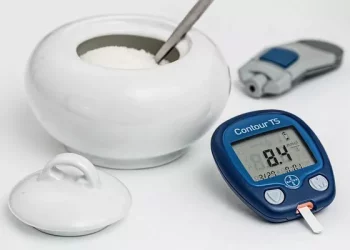Diabetes is a chronic metabolic disorder that demands meticulous attention to dietary choices to maintain stable blood sugar levels, manage weight, and reduce the risk of associated complications such as heart disease, kidney problems, and nerve damage. While proteins are an essential part of a diabetic’s diet for maintaining muscle mass and overall health, not all meats are created equal. Some meats can have adverse effects on blood glucose control, lipid profiles, and overall well-being due to their fat content, processing methods, and additives. In this article, we will explore in detail the types of meats diabetics should avoid and the reasons underlying these dietary precautions.
The Impact of Meat Choices on Diabetes Management
Meat is a significant source of protein, but its composition varies widely among different cuts and types. For diabetics, choosing the right meats is crucial as it can influence glycemic control, insulin sensitivity, and cardiovascular health. High-fat meats can lead to weight gain and increased insulin resistance over time. Processed meats often contain additives like sodium nitrite and excessive amounts of salt, which can elevate blood pressure and put additional strain on the kidneys, already vulnerable in many diabetic individuals. Moreover, the way meats are cooked can also affect their nutritional value and potential harm; for example, frying in oil adds extra calories and unhealthy fats, potentially disrupting the delicate balance diabetics strive to maintain in their diet.
Processed Meats: A Hidden Danger
Bacon
Bacon is a beloved breakfast staple but a poor choice for diabetics. It is typically high in saturated fat, which can raise cholesterol levels, particularly LDL (the “bad” cholesterol). Elevated LDL cholesterol is a risk factor for heart disease, a common complication among diabetics. Moreover, bacon is often cured with salt and additives like sodium nitrite. The high sodium content can lead to water retention and increased blood pressure, exacerbating the strain on the cardiovascular system. A few slices of bacon can contain a significant amount of calories from fat, and when consumed regularly, it contributes to weight gain, further worsening insulin resistance. For a diabetic trying to manage blood sugar and overall health, starting the day with bacon can set a negative tone for the rest of the dietary intake and glycemic control throughout the day.
Sausages
Sausages, whether they are pork, beef, or chicken-based, are usually processed with a mix of fats, salt, and various seasonings. Many commercial sausages are high in saturated and trans fats, which not only increase cholesterol levels but also have been linked to inflammation in the body. Inflammation can disrupt normal insulin signaling pathways, leading to reduced insulin sensitivity. The added salt for preservation and flavor can cause fluid retention and hypertension, similar to bacon. Diabetics who consume sausages frequently may find it harder to control their blood pressure and blood sugar levels, especially as the combination of fat, salt, and potential additives takes a toll on their metabolic and cardiovascular functions.
Hot Dogs
Hot dogs are another form of processed meat that diabetics should avoid. They are often made from low-quality cuts of meat, fillers, and a high amount of sodium. The fillers can include starches and other additives that may cause a faster spike in blood sugar compared to pure, unprocessed meats. The sodium content is a concern for blood pressure regulation, and the overall combination of ingredients makes hot dogs a nutritionally poor choice. Even “low-fat” or “lean” versions may still have hidden sugars, sodium, or other additives that can undermine diabetes management efforts. When eaten, perhaps at a barbecue or sporting event, hot dogs can disrupt the careful balance of a diabetic’s diet, leading to post-meal blood sugar spikes and potential long-term negative health impacts.
High-Fat Cuts of Red Meat: Weighing the Risks
Ribeye Steak
The ribeye steak is known for its marbling, which means it has a significant amount of intramuscular fat. While this fat gives the steak its rich flavor and tenderness, it’s a double-edged sword for diabetics. The saturated fat in the marbling can increase LDL cholesterol levels, contributing to atherosclerosis (hardening of the arteries) over time. Atherosclerosis restricts blood flow, which is particularly concerning for diabetics who are already at risk of poor circulation due to nerve damage and vascular complications. Consuming ribeye steak regularly can lead to weight gain from the excess calorie content of the fat, worsening insulin resistance and making it more challenging to control blood sugar levels after meals.
Prime Rib
Similar to ribeye, prime rib is a cut of beef that contains a lot of fat, especially the outer layer of fat that gives it a juicy and succulent texture. This high-fat content means a large portion of the calories come from saturated and unsaturated fats. For diabetics, whose bodies may already struggle with lipid metabolism and insulin function, indulging in prime rib frequently can lead to elevated triglyceride levels in the blood, another risk factor for heart disease. The digestion of such a fatty meal also slows down, potentially causing a delayed spike in blood sugar as the body processes the nutrients, making it difficult to predict and manage post-meal glycemic levels effectively.
Lamb Chops (with Fat)
Lamb chops can be a delicious but tricky choice for diabetics. When cooked with the fat intact, they carry a substantial amount of saturated fat. Lamb fat has a unique composition that, while contributing to flavor, can raise cholesterol levels just like beef fat. Diabetics who enjoy lamb chops need to be cautious about trimming the visible fat before cooking and choosing leaner cuts whenever possible. Otherwise, consuming fatty lamb chops regularly can lead to increased insulin resistance, weight gain, and disrupted blood sugar control, similar to the effects of high-fat cuts of beef.
Fried Meats: The Double Trouble of Fat and Calories
Fried Chicken
Fried chicken is a popular fast-food item but a nightmare for diabetes management. The frying process coats the chicken in batter and then submerges it in hot oil, usually vegetable or animal fat-based oil. This adds a significant amount of calories from fat, often doubling or tripling the calorie content compared to baked or grilled chicken. The trans fats that can form during frying are particularly harmful, as they not only increase LDL cholesterol but also lower HDL (the “good” cholesterol). The combination of high-fat and high-calorie intake from fried chicken can lead to rapid weight gain and worsened insulin sensitivity. Diabetics who consume fried chicken regularly may experience more frequent and severe blood sugar spikes after meals, putting them at greater risk of long-term complications.
Deep-Fried Pork Cutlets
Deep-fried pork cutlets, like schnitzel, are another example of fried meats that should be avoided. The pork is typically pounded thin, breaded, and then fried until crispy. This process not only locks in the natural fat of the pork but also adds additional fat from the oil used for frying. The result is a meal that is high in calories, saturated fat, and potentially trans fats if the oil is repeatedly heated or of poor quality. Similar to fried chicken, it can lead to weight gain, increased cholesterol levels, and disrupted glycemic control, making it a poor choice for diabetics striving to maintain a healthy diet and stable blood sugar levels.
Meats with Added Sugars or Sweet Sauces
Barbecue Ribs
Barbecue ribs are often marinated in sweet barbecue sauces that contain high amounts of added sugars like sucrose, fructose, or corn syrup. The sugars caramelize during the cooking process, giving the ribs their characteristic taste but also loading them with carbohydrates that can cause a rapid spike in blood sugar levels. Even if the ribs themselves are a relatively lean cut of pork or beef, the sauce can turn them into a diabetic-unfriendly dish. The combination of the meat’s protein and the added sugars creates a complex mix that challenges the body’s ability to regulate blood glucose, especially when consumed in large quantities or as part of a meal with other carbohydrate-rich sides like fries or coleslaw.
Teriyaki Chicken (from Bottled Sauces)
Teriyaki chicken can be healthy if made from scratch with minimal added sugars, but the version often found in restaurants or made with bottled teriyaki sauces is a different story. Bottled teriyaki sauces are notorious for their high sugar content, used to achieve the sweet and savory flavor profile. When chicken is marinated and cooked in these sauces, it absorbs the sugars, which then enter the bloodstream quickly after consumption. Diabetics who order teriyaki chicken thinking it’s a protein-rich option may be unpleasantly surprised by the blood sugar spike that follows, highlighting the importance of being aware of hidden sugars in meat dishes, especially those with added sauces.
What to Choose Instead
While diabetics should avoid the above-mentioned meats, there are plenty of healthy alternatives. Lean cuts of chicken, like skinless chicken breast, are excellent sources of protein with minimal fat content. They can be baked, grilled, or poached for a delicious and blood sugar-friendly meal. Turkey, especially ground turkey (lean) or turkey breast, is another great option, lower in fat compared to many cuts of red meat. Fish such as salmon, tuna, and cod are rich in omega-3 fatty acids, which have anti-inflammatory properties beneficial for heart health and insulin sensitivity. Lean cuts of beef, like sirloin or flank steak, when trimmed of visible fat, can also be part of a balanced diet, providing protein without the excessive fat burden of other cuts. Pairing these proteins with non-starchy vegetables and whole grains can create a well-rounded, diabetes-friendly meal that supports stable blood sugar levels and overall health.
Conclusion
The choice of meats plays a vital role in diabetes management. By steering clear of processed meats, high-fat cuts, fried options, and meats with added sugars, diabetics can better control their blood sugar, lipid profiles, and weight, reducing the risk of complications associated with the disease. Opting for lean, unprocessed proteins and being mindful of cooking methods and added ingredients will ensure that meat remains a healthy part of the diet, supporting the body’s efforts to manage diabetes effectively. Regular consultation with a registered dietitian or healthcare provider can further help in tailoring a personalized meat and overall dietary plan to meet individual needs and health goals.



























